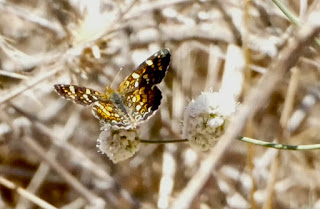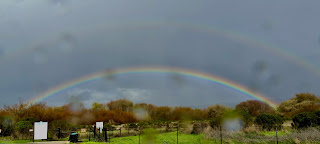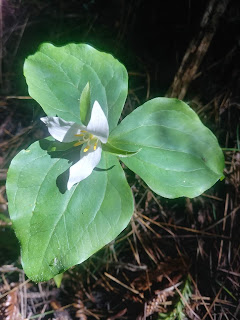I had seen the bizarre photos on the internet, the mysterious pods, the fleshy geodesic domes. I set off to find the creatures for myself. I checked the location tags on maps, traced pathways on campus, prodded under ivy, scanned wood chips. Failure after failure. I began to wonder if it wasn't all a hoax, a goose chase. Then one day, just outside the library, with undergrads walking by as though everything were normal, I spotted one. A latticework ball the color of boxed macaroni and cheese hunkered amid the mulch, its gooey red interior peeking out between the struts. Next to it, another was just emerging from its cracked white egg.
I bent close to examine the creatures and a noxious wave of filthsome stench assaulted my nose, staggering me backward.
This is the basket stinkhorn, also known as latticed stinkhorn or red cage fungus. It lives in decaying plant matter, especially wood chips, and each fall it sprouts these astonishing fruiting bodies. The basket stinkhorn is originally from the Mediterranean but is now found on every continent except Antarctica. The odor attracts flies and beetles which eat the gooey center and spread the spores that form there.
The basket stinkhorn is not the only mysterious visitor making its home in our landscaping mulch. A week or so later, again after several rounds of searching, I came upon another. Deep under a spiny thistle, a cluster of mushrooms raised smooth russet caps on bright white stipes. Delicate webbing laced the underside of the cap. I picked one and pressed the stipe with my thumbnail. The white slowly blushed blue.


Several more of these psilocybe allenii mushrooms sprouted in this weedy patch. There must have been some irrigation leak because the woodchips here were damp though it hadn't rained for months. This species was discovered in 2012, when genetic analysis differentiated it from other psilocybe species. It's found all along the west coast of the United States and has almost certainly spread to new locations as wood chip mulch has become more common. The psilocybe allenii mushroom doesn't look nearly as strange as the basket stinkhorn, but its molecules do things that are much more bizarre.
The bluing on these mushrooms is caused by a molecule called psilocybin. When humans consume psilocybin, it affects our brain activity dramatically. Some functions, such sense of self, sense of time, and planning, are suppressed. Other functions, such as sensory perception, emotions, and connections between disparate parts of the brain are enhanced. This can feel like epiphany, access to a previously-hidden world. People may experience hallucinations, nausea, inability to move, and/or the giggles. It can be confusing, beautiful, frightening, pleasurable, hilarious, sad, or all of the above. Many people report that a single experience changes their perception of the world permanently. Medical research has shown great promise for combining talk therapy and psilocybin to treat addiction, depression, and anxiety.

No one knows for certain how or why this molecule evolved, but it may have evolved as part of fungi's battles with bacteria or insects. One fungus uses the psilocybin it produces to dope cicadas and cause them to spread the fungus's spores.
What could be more banal than a bare patch of landscaping wood chips? We spread them outside schools, banks, and strip malls. They are meant to discourage weeds from disrupting tidy in-between spaces. But those wood chips hold potential energy in their organic molecules, a resource that will not remain untapped and undisturbed. Strange creatures spread their thread-like bodies, eating and growing. They send forth their fruiting bodies, flush with weird molecules that attract insects and assault our noses, or that fight insects or bacteria and alter our brains and our understanding of the world.
LINKS



















































